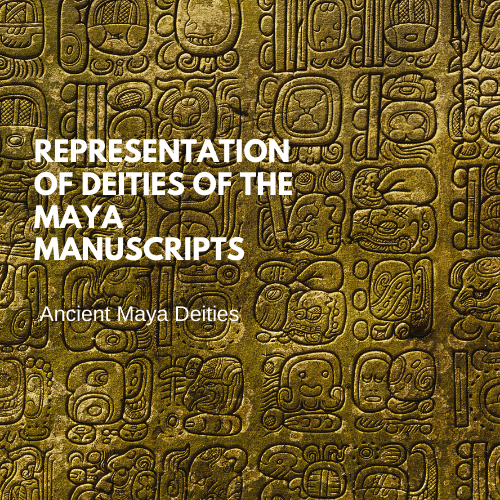Representation of Deities of the Maya Manuscripts
Representation of Deities of the Maya Manuscripts
Ancient Maya Deities
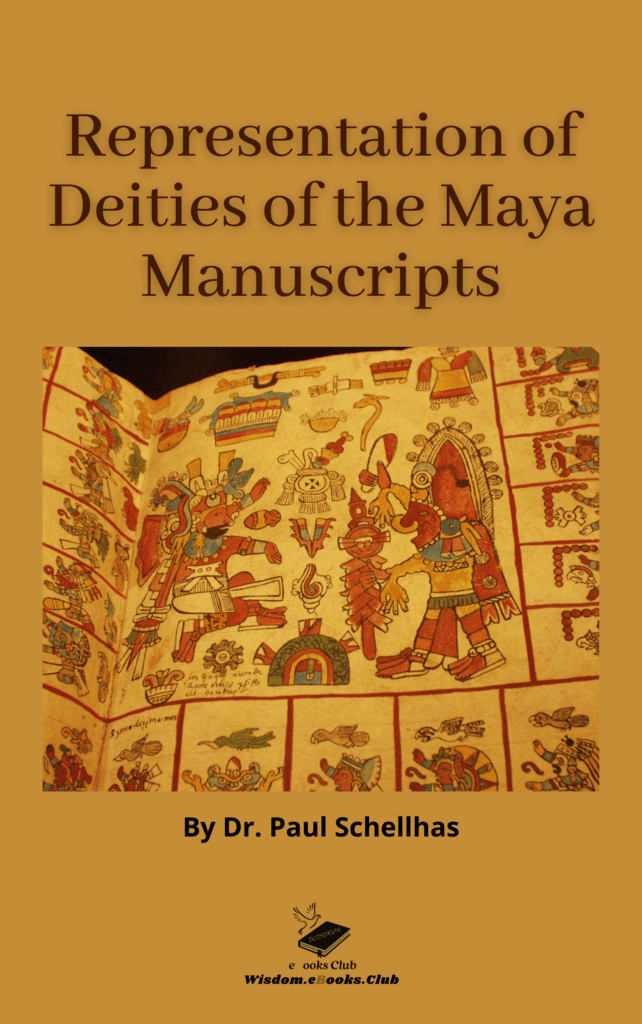
Due to the time depth of the Maya culture and the various influences from elsewhere in Mesoamerica, the pantheon of Maya gods and deities is particularly rich and the nature of Maya religious beliefs makes it difficult to grasp for the western eye.
The seemingly well-ordered polytheistic nature of the Maya pantheon derived in large measure from the study of Maya manuscripts written in hieroglyphs from the time just before the Spanish Conquest (i.e. “Postclassic Codices”) which were the most accessible collections of Maya text and images in the early years of Mesoamerican archaeology.
One of the first and highly successful attempt to organise the various Maya deities represented in the Codices was made by German scholar Paul Schellhas in 18975. Since then, our knowledge of Maya iconography and epigraphy has grown immensely thanks to the discovery of thousands of artefacts (painted pottery, carved monuments, mural paintings, etc.). We now know that some Codex deities can be linked to non-Maya gods and that Maya religion didn’t evolve in a silo but was opened to influences from other Mesoamerican cultures (and vice versa).
A dozen or so of Maya gods are well identified and can be found throughout the corpus of Maya iconography. Many of them have their counterparts elsewhere in Mesoamerica. For example, the Mexica (i.e. Aztecs) god Tlaloc and the Maya god Chaak are both gods of rain and lightning. But, for the rest, there is much confusion. This is mostly due to the nature of Maya religious belief.
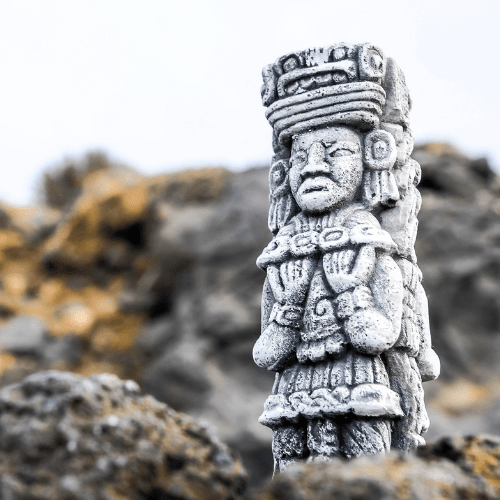
To the ancient Maya, all things, living as well as inanimate, had an inherent “power” which could be manifested in supernatural beings (i.e. “deities”). The Maya also believed in a host of lesser supernatural beings such as the Way (pronounced “why”) who were spirit alter-egos. Ancestors too were part of that supernatural world and their role was to intercede with the gods for the living. Maya gods could simultaneously exist in several forms or aspects. Pawahtuun, for example, was a quadripartite divinity who stood at the four corners (cardinal directions) of the universe.
Quite commonly deities were paired, expressing primary cosmic oppositions such as light vs Darkness, Wet vs Dry (there are only 2 seasons in the Maya area: the rainy season and the dry season). Many other deities appear to be linked to specific Maya cities or even dynasties and the territory they controlled.
Supernatural beings were characterized by a variety of criteria such as function, sex, direction, age, colour, etc., and attributes such as glyphs, symbols, iconographic elements, etc. Some of these elements could change to reflect the various aspects of the deity.
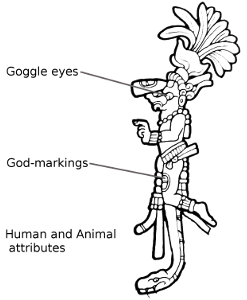
In the texts and iconography, certain features distinguish supernatural beings from historical characters:
• goggle eyes
• prominent front teeth / snout
• so-called “god-markings”
combination of various animal and human attributes
Paul Schellhas
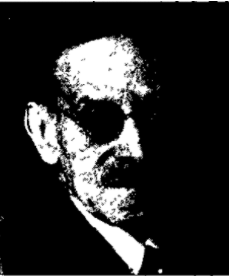
- Maya researcher and German lawyer Paul Schellhas was born on November 16, 1859 in Berlin and died in 1945 during the Battle of Berlin. Currently, he lies at the Zehlendorf forest cemetery in the war cemetery.
- Schellhas was born to entrepreneur Julius Schellhas and spent his initial days devoting his time to his career before taking up the lawyer profession. He obtained his doctorate in 1884 after pursuing camera studies and law in Berlin. He started as a lawyer before becoming a judge at the Charlottenburg district court later on in around 1900. By the time of his retirement, he was a district judge.
- Schellhas started with Egyptian hieroglyphic script as a part-time job but after coming across the Mayan illuminated manuscript preserved in the Saxon State Library in Dresden, his track completely changed as it made a significant influence on him.
- Since then, with substantial support from Ernst Förstemann, Schellhas attempted decoding Mayan literature. He contributed brilliantly to this field between 1892 to 1904 when he was able to identify around 30 Maya gods with the help of letters with the names like God D for Itzamná , God B for Chaac , God K for K’awiil or Goddess O for Ix Chel.
- Schellhas’ theory that Mayan literature is ideographic has been deemed false because around 90% of it can be interpreted today. However, his contribution and research is still earning major recognition for being able to decipher the script and there is no denying his brilliance. At an early stage, Schellhas had talked about how it’s possible to interpret inscriptions on stone monuments as the correct names of the depicted individuals, and he also suggested including scripts on grave ceramics.
- Since 1959 many others were aware of this too, like Tatiana Proskouriakoff, Heinrich Berlin and even Michael D. Coe. Schellhas served as an official representative of the Washington DC Anthropological Society.
Publications
- Ideals and Idealism in Law, 1886
- The gods of the Maya manuscripts: a mythological cultural image from ancient America, Dresden 1897
- Forensic records, 1900
- The bankruptcy cases in judicial practice, 1902
- Broadcasting and Copyright, Berlin 1929
- The stele 12 by Piedras Negras, in: Zeitschrift für Ethnologie 66, 1934, pp. 416-422
- Fifty years of Maya research, in: Zeitschrift für Ethnologie 69, 1937, pp. 365–389
- The deciphering of the Mayan hieroglyphs an insoluble problem? in: Ethnos 10, 1945, pp. 44-53
To see more information about this topic or other religious topics, you may check the books and magazines available at www.wisdomebooksclub.com or visit our peals of wisdom page page by clicking on this link to access more interesting blog articles, games, quizzes, music videos, religious poems, Jewish recipes, popular sermons, and more.
Representation of Deities of the Maya Manuscripts Read Post »
